




Concrete structures near water level bridge rivers and drainages.
Low water crossings are designed to allow normal flow under the trail, and to be over-topped during seasonal floods.
by Stuart Macdonald, Trail Consultant, American Trails
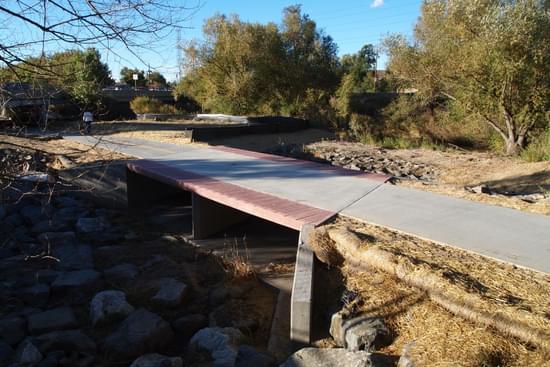
Much wider than culverts, these structures cross over drainageways at the same grade as the trail surface. Low water crossings are designed to allow normal flow under the trail, and to be over-topped during seasonal floods. Concrete is the normal material used to withstand flooding and scouring from flowing water. Bridges are typically raised well above the waterway and at least above the 100-year flood level. Railings are typically not used on low water crossings, although the structure may be wider than the normal trail width. Similar structures are used to carry trails over streams under road bridges. Narrow channels may be cut in the concrete to allow moderate water flow through rather than under the trail itself.
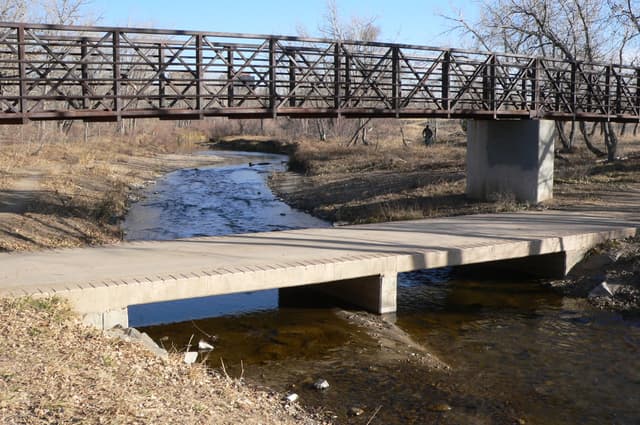
Cherry Creek Trail in Denver, Colorado is crossed by both a steel trail bridge and low-water concrete trail structure

Cherry Creek Trail in Denver, Colorado is crossed by both a steel trail bridge and low-water concrete trail structure
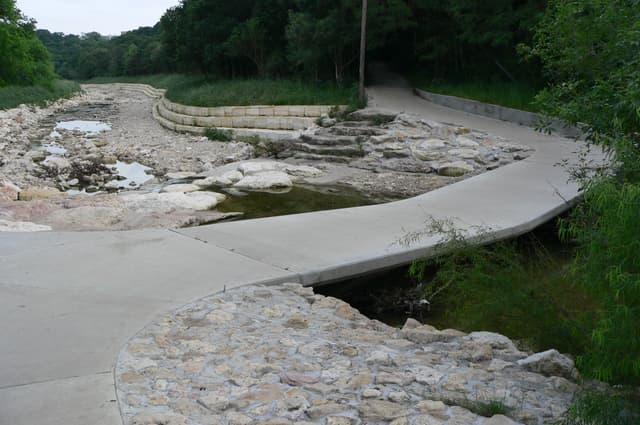
Built in 2006, the Janet Fish Pedestrian Bridge honors the founder of the Shoal Creek Hike and Bike Trail in Austin, Texas
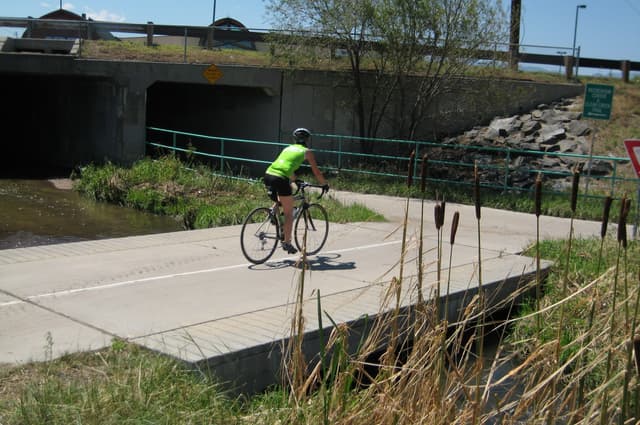
Low water crossing before trail enters road culvert on the Clear Creek Trail in Wheat Ridge, Colorado
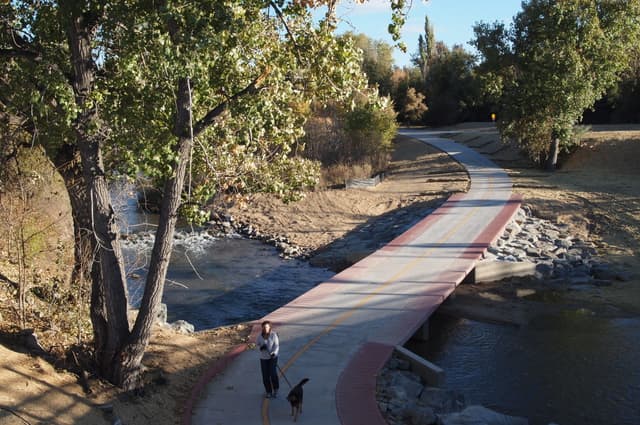
Pink concrete edges give visual warning on low water crossing over Cherry Creek at Holly Street bridge in Denver, Colorado
Sustainable Trail Bridge Design
posted Oct 7, 2021
Designing trail bridges based on trail-specific Trail Management Objectives (TMOs) is essential for providing the desired trail experience, for ensuring user safety, and for maximizing bridge longevity.
posted Jun 15, 2020
Guidelines for accessing, designing, and building launch sites for carry-in watercraft.
Ramps for Accessible Trails and Shared-Use Pathways
posted Nov 5, 2019
Ramps, typically used for building access, are often provided on trails.
Steel Trail Bridges on Shared-use Urban Pathways
posted Oct 24, 2019
A variety of steel-frame commercial bridges along typical multiple-use trails.
5,920 views • posted 08/17/2018